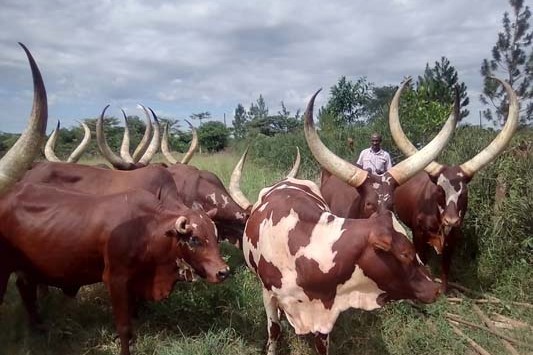Scientists are optimistic, but not complacent, that the prevalence of Mycoplasma bovis is now very low on New Zealand farms. Elaine Fisher reports.
Pre-border protocols, including PCR testing and treating semen with antibiotics, aim to help minimise the risk of Mycoplasma bovis re-entering New Zealand, Ministry for Primary Industries’ Chief Science Adviser Dr John Roche says
“Now we can have batches of semen tested before it is sent here or have it treated with antibiotics that inactivate the bacteria, if it is present and viable. That, together with on-going research, is giving greater confidence,” he told the Tauranga Moana Biosecurity Capital forum “Readiness & Response in a Pandemic: the Application of Science”, held on-line in mid-October.
Protocols for the use of new testing procedures have been established; in particular, a PCR test validated by the National Centre for Biosecurity and Infectious Disease in Wallaceville.
- bovis is spread animal-to-animal and because there is no longer any live animal trade into NZ, that risk has been removed from the border.
“However, one avenue of concern is the illegal pathway. We don’t know if M. bovis came here via a legal or illegal channel, but it is a challenge to shore up all points of entry. M. bovis took a long time to come in the first place and we have strengthened the border even further.”
From July 1, 2018, when the decision was made to eradicate and the programme was stood up, $523m has been spent on operational and compensation payments.
By October this year, $211.7 million had been paid in compensation with 2,676 claims paid and completed and a further 23 being processed. In total 172,816 cattle have been culled.
As of October 24, 2021, there were just four “M. bovis Active Confirmed” properties in NZ, John said. “That’s good news. The number of farms known to be infected with M. bovis has been very low for quite some time. Now we are at the tail of the disease, we are looking harder and harder and finding less and less infections. We have got reason to be quietly confident that there is a low national prevalence of M. bovis. This is cause for cautious optimism, but not room for complacency.”
In total M. bovis has been found on 272 farms of which 268 are now ‘cleared confirmed properties’. In October 2021 there were no active properties in the North Island, and four in the South Island.
The disease probably arrived in the country in 2015 or 2016 and was discovered in July 2017.
“It had a head start and our response needed to catch up to find, contain and control the infection that was out there.”
The success to date was credit to the tremendous MPI team of disease management experts and staff, working collectively with industry organisations and farmers, he said, making special mention of MPI chief veterinary officer, Mary van Andel for her strategic leadership of the M. bovis response.
“We were able to share the learnings we had from tackling M. bovis with the Covid-19 response team. Many of our experts were seconded back and forth across government departments to provide important insight into tracing, testing systems and communications.”
- bovis is difficult to diagnose in an individual animal, as clinical signs are not seen in all infected animals, so collecting samples for diagnostic testing is necessary to identify groups of infected animals.
The two tests used to detect M. bovis are:
- ELISA test (Enzyme Linked Immunosorbent Assay)
- PCR test (Polymerase Chain Reaction) which is the same type of test used to identify Covid-19.
Background surveillance for the disease continues and John said less than 0.5% of commercial dairy herds react on BTM (bulk tank milk) ELISA tests. Since monthly BTM screening began in July 2019, 19 infected dairies have been identified.
In September 2021, the Bulk Tank Milk screening programme tested samples from 10,714 dairy farms, and overall, 10 farms had a ‘detect’ result that required further onfarm investigation.
Of the September’s 10 detects:
- 8 dairy farms have been found not infected after on-farm investigation
- 1 dairy farm was already an Active Confirmed Property
- 1 dairy farm has been determined not to require onfarm testing, following an epidemiological investigation.
The Beef Surveillance Programme screens beef cattle not connected to the known network of infected properties.
As at October 27, 2021, more than 504,800 animals had been sampled by the Beef Surveillance Programme, from about 16,000 farms. No infected farms have been found from this surveillance to date. These results are giving increasing confidence that M. bovis is not widespread in the beef sector. Farming practices in NZ involve large scale and frequent movement of cattle to maximise pasture utilisation and mitigate the effects of high land costs. The economic basis of livestock production is underpinned by these movements, but they are also an issue in disease spread, detection and prevention.
“You can look at disease management like trying to run up an escalator which is coming down. You can either run really quickly or slow down or stop the escalator, so you can climb up and finally start the escalator again.
“With M. bovis the first step was to stop movement of livestock to stop the movement of the pathogen. (i.e., a ‘lockdown’ or other measures to slow the speed of the escalator).
“The second was to develop more agile processes so that we get faster at finding, containing and controlling M. bovis infection (run faster).”
Now the levels of detection are low, John said background surveillance to regularly look for disease was even more important.
“We can’t calculate a time period for when the delimiting will be over but the signs are encouraging.”
Those signs include that the outbreak was caused by a single incursion into NZ; cases are linked by tracing and phylogeny; effective reproduction number and case finding incidence are trending downwards; operational timeframes are decreasing; and there is no widespread disease in unlinked populations.
M. Bovis response
The response to M. bovis got off to a bumpy start; farmers were not always supported well enough and there were delays in compensation, Ministry for Primary Industries’ Chief Science Adviser Dr John Roche says.
“Among the learnings from an independent review in 2019 conducted into the response was the importance of effective communications.
“We did not do enough to bring everyone along on the journey with us and we did not work as closely as we could have with the wider industry.
“The responses to M. bovis and Covid-19 involve dealing with humans with beating hearts. Every response, from MPI driving up a farm driveway or someone testing positive to Covid-19 and going into MIQ, is not pleasant. It is vital to wrap care around the individuals, so the experience is as good as it can be.
“Taking on farmers’ feedback has resulted in quicker compensation payments, improved farmer-focused processes and shorter turnaround times for farms under movement restrictions.”
Since the beginning of the response, the average number of working days to pay an M. bovis non-complex claim has reduced from 47 days to 20 days. The time under Notice of Direction/Movement Control has improved significantly in the last two years—97 days in November 2019 compared to 27 days in September 2021.





